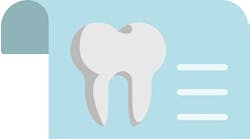After a slow 2022, we experienced some normalization in dental mergers and acquisitions (M&A) in 2023. Here are the trends that will impact 2024.
Significant portion of buy-side remains “pencils down”
As much as 40% of the buy-side went pencils down on M&A in the second half of 2022 and remained that way through the first half of 2023. These groups decided to focus on organic growth while interest rates rose. Their stated goal was to allow for the debt markets to settle and then ramp up M&A with a solid business in place. Interest rates continued to rise in 2023, keeping most groups that went pencils down on the sidelines. Most believe that interest rates are beginning to settle, and conversations with these buyers indicate they are ready to reengage in M&A by the end of 2023.
More "Practice Sales Today":
- Hello! May I buy your dental practice?
- I'll buy your business for 25x EBITDA
- 2023 market update: Finding the rhythm
New platforms are being formed to replace nonactive buyers
Dental continues to attract tons of interest from private equity groups (PEGs)! TUSK takes a handful of inbound calls every week from PEGs that want to enter dental or have recently created a new DSO through a significant acquisition and are now looking to be aggressive in the M&A space. These groups have allowed our clients the unique opportunity to join a group on the ground floor and benefit from a meaningful “second bite of the apple.” There are, however, pros and cons of working with new groups because the risk profile of the equity roll can vary greatly. We utilize our entire network to vet new buyers and help our clients make the right decision based on all available information.
Buy-side is being much more selective
Buyers active in M&A have become very pointed in their assessment of assets. Diligence lists have grown longer, and investment committees are taking a much deeper look than before. In addition to diving deeper into financial and practice management system data, they also look at fit and integration risk. Buyers are focused on how each acquisition will be additive, and the downside risk if they don’t integrate the business effectively. TUSK focuses on understanding what each buyer is looking for from a target acquisition profile perspective and how each client works with their strategy. This approach is excellent for the dental industry because buyers are focused on building partnerships that generate organic growth postclose rather than just aggregating earnings before interest, taxes, depreciation, and amortization (EBITDA).
Deal structures vary
As the cost of debt increased for buyers, it was only a matter of time before historical deal structures/ valuations were impacted. The groups that have remained active in M&A have taken a wide-ranging approach to changing their deal structures to account for higher interest rates on the debt they use to finance their deals while also making attractive offers to sellers. Buyers know that sellers are acutely aware of the “multiple” they receive, and because of this, buyers have had to change the structure of their deals to keep multiples at the same level. We have seen buyers introduce unfavorable elements in their deal to “window dress” it and save the stated multiple attractive. TUSK must go broader than ever to bring a wide range of buyers to the table, make the process competitive, and obtain the best deal terms possible.
Summary
DSOs were built with lofty growth targets in mind. Buyers cannot sit on the sidelines forever and hope that organic growth meets the annual growth targets they have set for themselves. Now that interest rates appear to be settling, we expect M&A to pick up by Q2 of 2024 and that the second half of the year will be similar to 2021, which was the height of dental M&A activity. New groups are being formed each month, and it’s important to explore everything the market has to offer. If you’re looking into a transition in the next 12–24 months, start preparing now.
Editor’s note: This article appeared in the December 2023 print edition of Dental Economics magazine. Dentists in North America are eligible for a complimentary print subscription. Sign up here.
Ryan Mingus, managing director of TUSK Partners, has 12+ years of sales and leadership experience in the dental and healthcare industry, most recently as business development director for strategy and optimization at Align Technology. Mingus earned his BA in economics and business from the Virginia Military Institute and his MBA from the University of San Diego. He also held the rank of Captain in the US Army National Guard.






